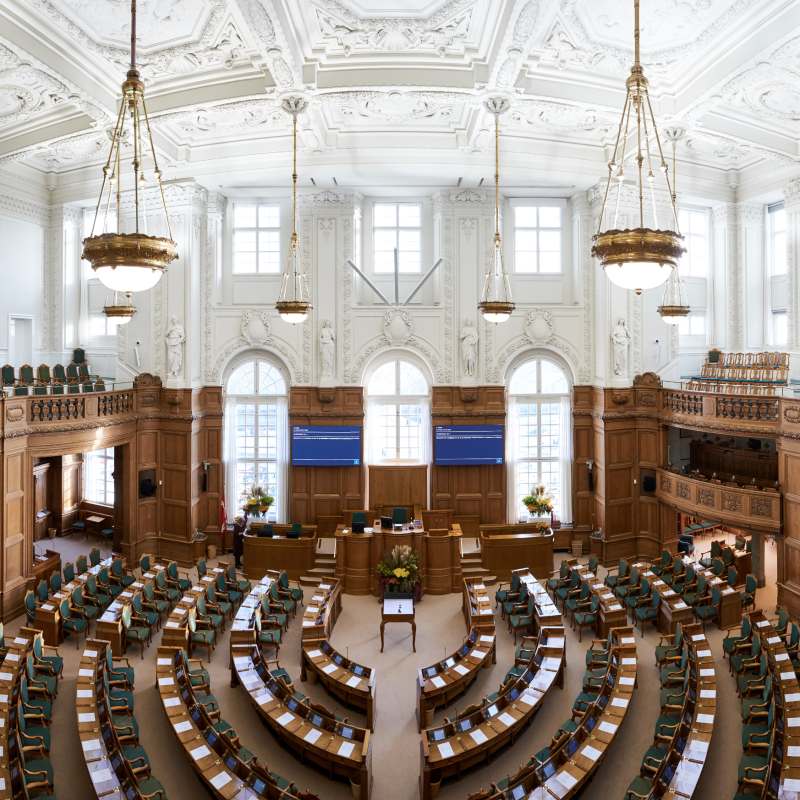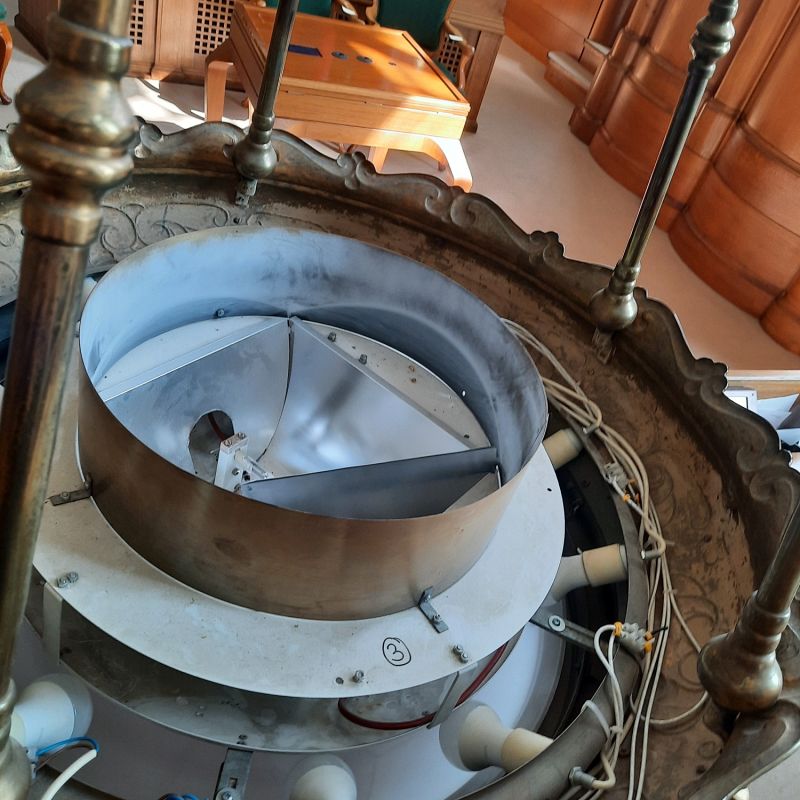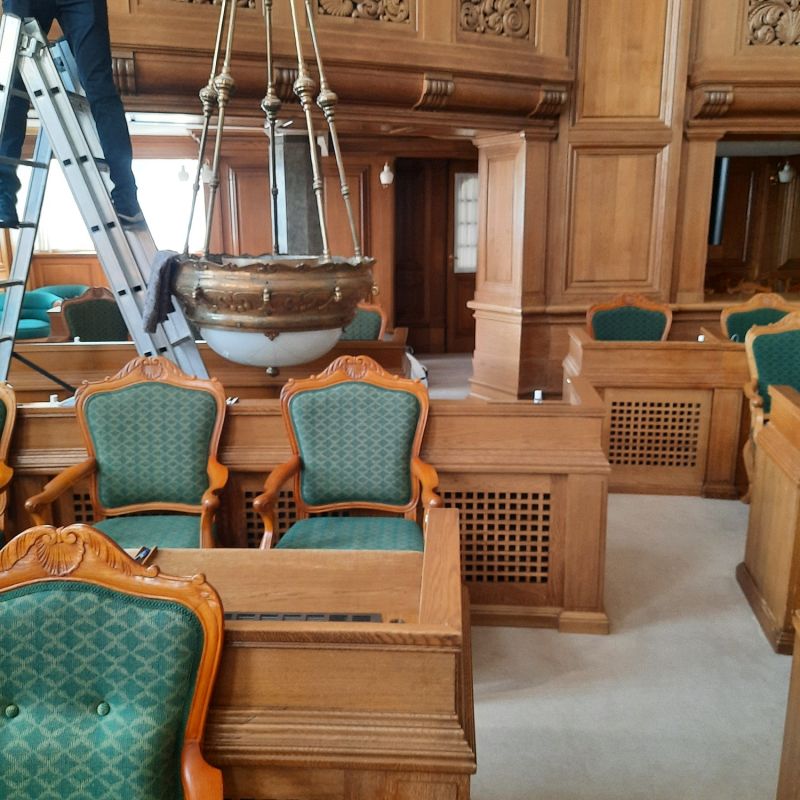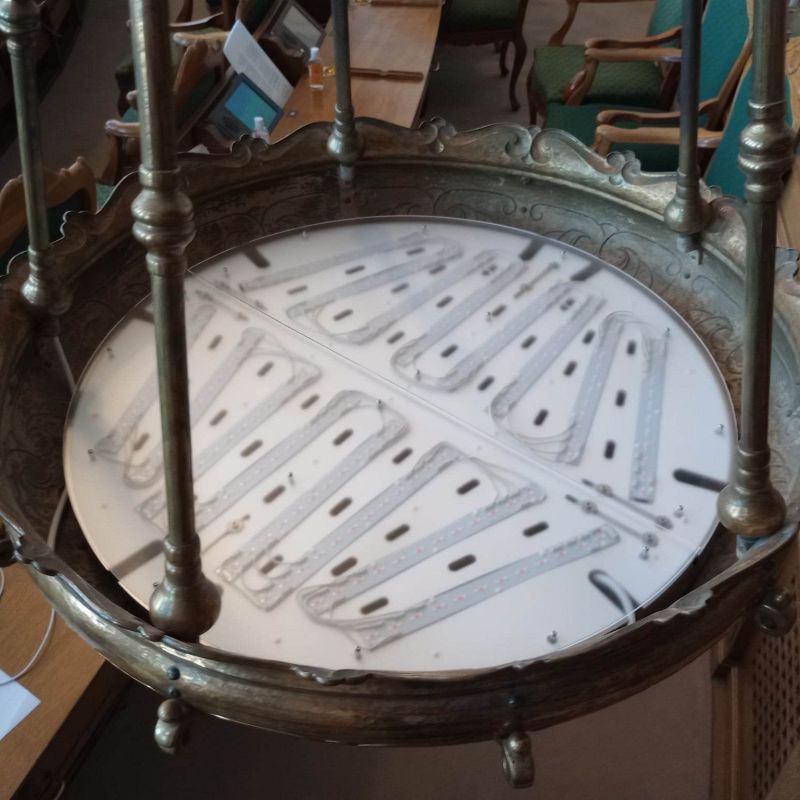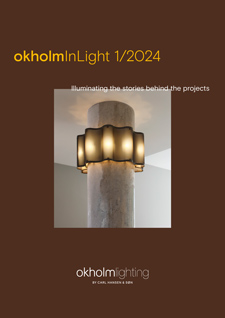FOLKETING HALL, CHRISTIANSBORG
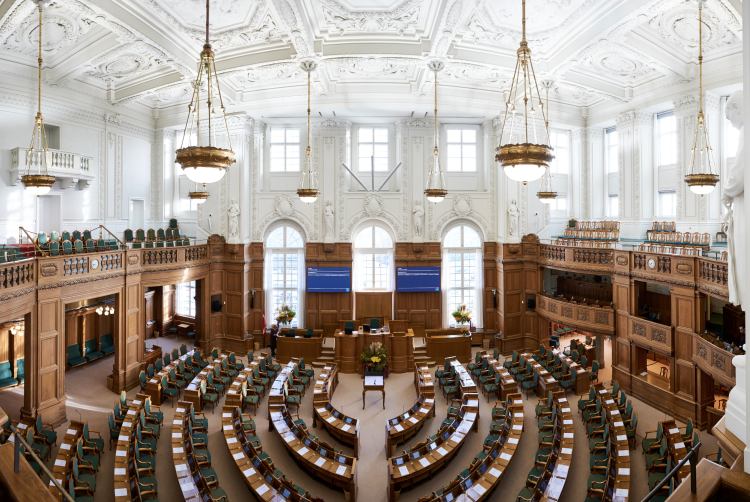
FOLKETING HALL, CHRISTIANSBORG, COPENHAGEN, DENMARK
The architect behind the current Christiansborg Palace, Thorvald Jørgensen, also designed the Folketing Hall, a grand space surrounded by three levels of galleries, including the public gallery, the royal gallery, and others. The hall’s furnishings are made of oak, and it is said that not a single nail was used in its construction. The ceiling is a stucco ceiling, created by sculptor Carl Mortensen in the early 1920s, who worked on its ornamentation for six years. At the center of the ceiling, three large panels symbolize fishing, trade, and agriculture. These panels are surrounded by reliefs referencing former Danish territories.
The large chandeliers in the Folketing Hall were designed by painter, metalsmith, and chaser F. J. Bentzen-Bilkvist and crafted by the company F.W. Doberck & Son, which was taken over in 1913 by master art blacksmith C. Amundin.
Okholm Lighting was entrusted with the prestigious task of renovating these iconic chandeliers and transforming them into energy-efficient and effective light sources for the hall. This complex undertaking involved dismantling the chandeliers, transporting them to Tønder, disassembling them, developing and integrating new LED technology, testing the updated luminaires, and finally returning and reinstalling them at Christiansborg. It was both a significant and physically demanding task.
Okholm Lighting successfully executed the project, ensuring that the Folketing Hall retains its original interior design, preserving its architectural history while future-proofing its lighting with modern technology and low energy consumption. A demanding and fascinating task has been completed with full respect for the originals, now seamlessly integrated with contemporary lighting technology.
Photo of the Folketing Hall: Source: The Danish Parliament. Photographer: Christoffer Regild
- Produkt:
- Chandeliers LED renovation New LED technology
- Material & finish:
- Original chandeliers
- Lysteknik:
- LED lighting technology, downward-directed comfortable diffused light via an opal glass dome, upward-directed light with specially developed LED boards ensuring illumination of the decorative stucco ceiling.
- Suspension:
- Existing and original suspensions preserved
- Remark:
- The renovation has been carried out with due consideration for the previous lighting design and the room's history.
